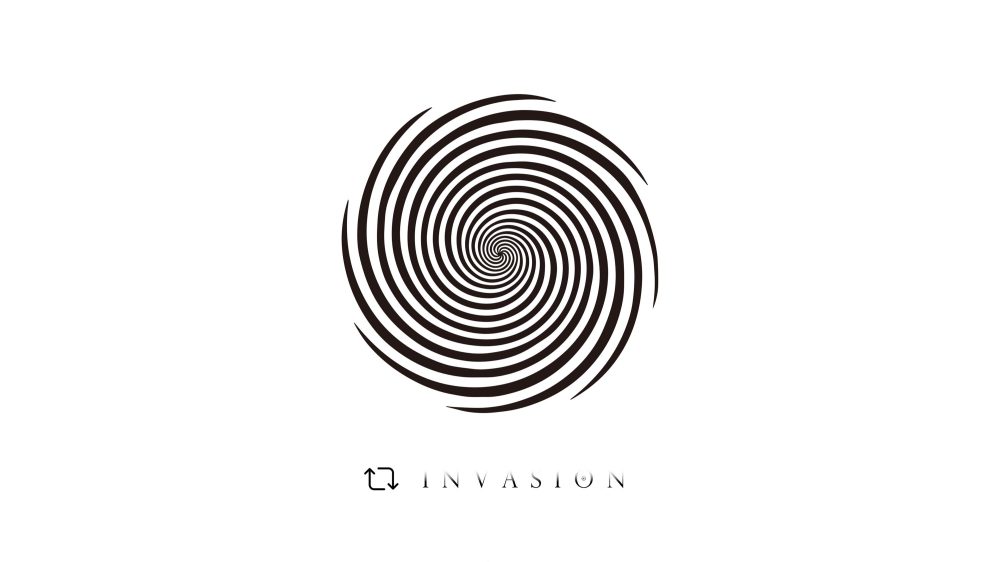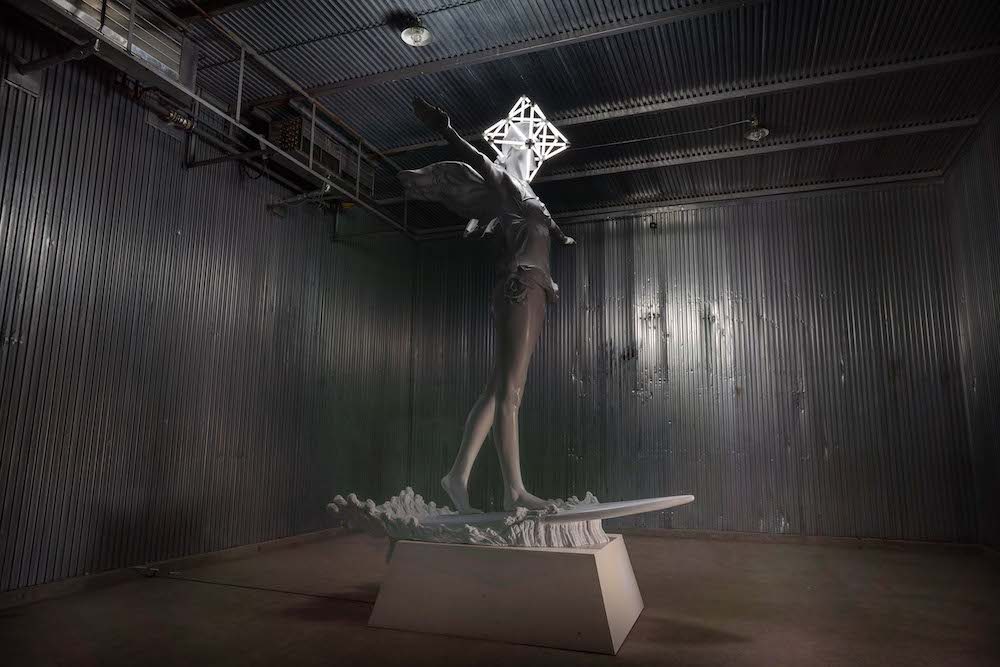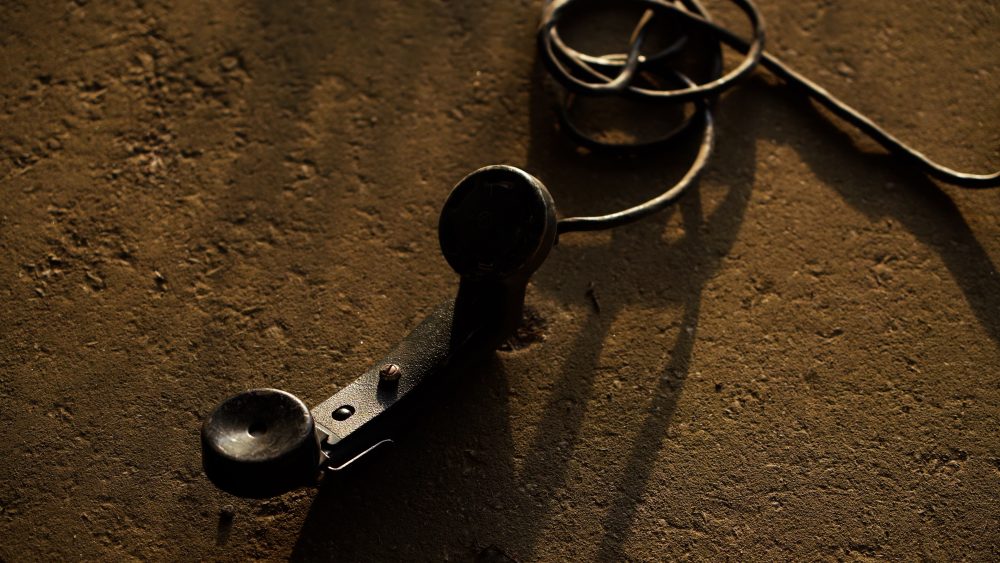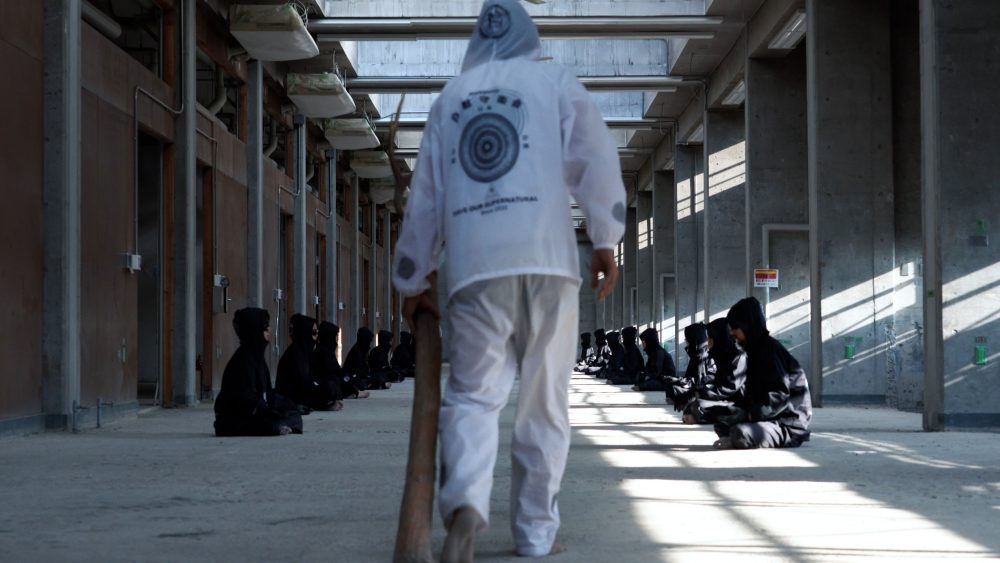
Motohiko Odani
Solo Exhibition
i n v a s i o n
2023.1.21 (Sat) - 2.18 (Sat)
Open on Tue. through Sat., 11:30 – 18:00
Closed on Sunday, Monday, and holidays
There will not be an opening party, but the artist will be in the gallery on the first day of the exhibition (January 21st).
Full-length (95-minute) video screening – starting times: 11:30, 13:05, 14:40, and 16:15 (ending at 17:50)
* In Japanese only
* Children aged 15 or under must have the permission of a guardian to watch the video.
* Taking photographs or video recording is not permitted.

We at ANOMALY are pleased to announce an upcoming exhibition of works by Motohiko Odani. Titled i n v a s i o n, it will run from January 21 (Sat.) to February 18 (Sat.), 2023.
Born in 1972, Motohiko Odani made his professional debut as an artist with the solo exhibition Phantom Limb held at P-House in 1997. After participating in biennale exhibitions at Lyons, Istanbul, and Gwangju, he served as representative of the Japanese pavilion at the Venice Biennale in 2003. He has likewise continued to show works in group exhibitions at venues including the Fondazione Sandretto Re Rebaudengo (Turin), Art Sonje Center (Seoul), Mori Art Museum (Tokyo), and Museum of Contemporary Art Kiasma (Helsinki). As this activity suggests, his art has been highly acclaimed both inside and outside Japan.
Odani is a rare artist. His works are by no means confined to sculpture; they extend to a wide range of other fields including photography, video, and installations. In producing works, he is able to apply a variety of modes of expression not limited to any specific medium.
He showed large-scale installations and sculptures that jolted our sense of corporeality along with video works in a solo exhibition at GINZA MAISON HERMÈS Le Forum in 2009 and another titled Phantom Limb at Mori Art Museum in 2010 (the latter also toured Shizuoka Prefectural Museum of Art, Takamatsu Art Museum, and Contemporary Art Museum Kumamoto). These shows left visitors with a keen sense of how the concept of “body” is wrapped in “illusion.”

《Inferno》 2010
Installation view: Motohiko Odani: Phantom Limb, Mori Art Museum, Tokyo, 2010
Photo: Keizo Kioku / Photo courtesy: Mori Art Museum, Tokyo
©️Motohiko Odani
Thereafter, Odani held a solo exhibition at Fotografiska in Sweden in 2013 and took part in group exhibitions at the 21st Century Museum of Contemporary Art, Kanazawa in 2013, Museum of Contemporary Art Tokyo in 2014, National Museum of Art, Osaka in 2016, and Daegu Art Museum in 2017. In more recent years as well, he has remained in vigorous action, as exemplified by his opening of the shop KONBO-YA on Megi Island, which is more commonly known as Onigashima (Ogre Island), at the Setouchi Triennale 2022, and participation in a group exhibition at the Centre Pompidou-Metz in the same year.

Setouchi Triennale 2022 Motohiko Odani “KONBO-YA”
Photo: Hidehiko Omata
In his solo exhibition at ANOMALY three and a half years ago titled Tulpa – Here is me, Odani displayed a sculpture that was a self-portrait in death that seemed to proclaim “I am here, but it is both me and not me.” From his debut solo exhibition right up to the present, the body and phantom sensations of it have been one of the themes at the nucleus of his works. The pentagram, one of the motifs appearing in works in the Tulpa series, manifested the outlook on death and life among the ancient Egyptians, who associated the starfish with celestial stars and stars with the womb. Odani sensed a symbolism of transformation in the pentagram, and chose it for the motif of this previous solo exhibition.
At the 2022 Reborn Art Festival, Odani displayed a huge work standing about 6 meters tall that was crowned with a decorative light in the shape of a merkaba (*1) and wowed visitors.

《Surf Angel (provisional monument2)》 2022
Installation view: Reborn Art Festival 2021-2022, 2022
Photo: Hidehiko Omata
©️Motohiko Odani
This exhibition consists of a new full-length video work whose production took over three years, along with a short video work and a sculpture that was first shown last year.
Titled i n v a s i o n, the same as the exhibition itself, the full-length video adopts the spiral pattern used to induce hypnotic spells as its icon. The swirling form has repeatedly been used in Odani’s works. The spinning icon taken from an old book on hypnotism recalls the Psycho Jenny character(*2) appearing in the manga Devilman, where it is used as a sign of both the “sleeping” and “waking” states. The spiral also appears in the cochlear duct of the inner ears of vertebrates, and is surely a pattern of importance for Odani, who often uses animals as motifs.
Does his use of the spiral this time denote sleep, waking, change, or return to the starting point? In i n v a s i o n, the spiral is used as a metaphor with diverse meanings spanning the ages, and functions as a pattern symbolizing the magical throughout the work.
In this connection, one is reminded of Franz Mesmer, a physician who exerted an influence on the French Revolution and German Romanticism in the 18th century, and attracted a dedicated following in spite of being completely shunned by the contemporary medical establishment dealing with mental conditions. In his theory about the influence of planets on the human body, Dr. Mesmer asserted that the free flow and circulation of fluids was vital for a healthy life. He was also known for his therapy involving hypnosis. The hypnosis he incorporated into his treatment was at the same time a magical act that induced a kind of trance, and was also closely tied to religious experiences. In i n v a s i o n, the “magic” mentioned by Odani presumably refers to a kind of apprehension differing from that of medicine and natural science.

《i n v a s i o n》 2020-2022 ©️Motohiko Odani
The video also contains portraits of Edison and Freud, a monument to Pavlov, a military telephone, and a wireless device. While the incandescent light bulb, telephone, and phonograph (*3) constituted landmark leaps of scientific advancement, it can easily be imagined how glass balls emitting light and receivers or devices that carried the sound of distant voices when held to the ear were originally viewed by many as magical even as they spread in use. Science was once perhaps surprisingly close to the concept of magic.
It may be added that “believing” is at the same time presented as an extremely personal matter in this video work. It is depicted as the re-enchantment of the individual by the individual that occurs on the other side of the rational world monitored by surveillance cameras.

《i n v a s i o n》 2020-2022 ©️Motohiko Odani
After I got the underlying idea, I intuitively felt that the production of this work would be in 2020. Japan had made the transition to the Reiwa era, and the Tokyo Olympics was going to be held in that milestone year. I supposed that these events had the connotation of hope for the future. In 2020, nevertheless, Covid-19 spread around the world and plunged everything into a darkness with no light on the horizon. In this atmosphere, I continued to film here and there, and edited the footage as if I were making collages. As things turned out, the video was finally shown in the year that saw demonstrations against Covid vaccinations, the outbreak of war between Russia and Ukraine, and the assassination of a former prime minister. I do not know if the work contained some sort of future or ended up being contained in it.
A number of elements including water, hypnotism, and religious cults converge in the video. I deliberately avoided depiction of psychological states like that in movies, and excluded structures that were liable to induce empathy. The important thing is the retweet mark. I used this revolving pattern in the video as a metaphor with a varied significance, and gave it several meanings (such as rebirth, the order of roles, changes in truth, and return to the same place).
Why do people believe a specific subject, and why do they look upon anything outside their own beliefs as inimical? There is a rationale here that only the person in question can understand. Even if one rejects the occult and firmly believes in science alone, re-enchantment begins on the other side of the world where such rationality is pursued. The present age gives me the strong feeling that, far from coexisting in parallel, the two are locked in a deepening confrontation.
Lastly, I would like to present an excerpt from a text that inspired this work.
“The ghosts of totalitarianism grab the minds of many and trigger their stampede toward exclusion and war when they have lost the margin to think for themselves and fall under the misapprehension that views of others which they have passively absorbed are their own. The signs that simultaneously appear then are the rise of a fastidious desire to brand things as either white or black, and a proclivity to self-righteous over-reactions.”
– Takashi Okada, Maindo kontororu (Mind control), enlarged and revised edition, published by Bunshun Shinsho, 2016, p. 285.
Motohiko Odani
i n v a s i o n (2020−2022)
— Screening of the first full-length video work by Motohiko Odani, who spent about three years on its production.
ANOMALY
January, 2023
Notes:
(*1) Merkaba
A stellated octahedron. It is made by interlinking two regular tetrahedrons, and is considered a sacred geometric symbol.
(*2) Psycho Jenny
A demon appearing in the manga Devilman by Go Nagai. Her eyes have revolving irises that possess an intense power for spiritual interference. She blocked Satan’s own memory and replaced it with a human memory. In the second half of the story, she reawakens Satan by restoring his memory.
(*3) Incandescent light bulb, telephone, and phonograph
The incandescent light bulb was reportedly invented not by Edison, but by the Englishman Joseph Swan. Edison developed a practical light bulb with a higher stability. Similarly, many claim that the real inventor of the telephone was the Italian Antonio Meucci; Bell acquired a patent for his device in the United States ahead of Edison. It is said that many of what are generally thought to be Edison’s inventions are actually improvements on predecessors. Various scientists around the world were doing research and development in the same fields at the same time.
Motohiko Odani
The core theme of his work encompasses the spiritual phantasm in lost physical sensations and transformation of the body, and explores ambivalent gap between existence/absence, magic/religion, rationality/irrationality, and a state of awakening/half dreaming. He conducts extensive research and practice to bring a new perspective to the deconstruction of the history of modern and contemporary sculpture in Japan.
His works have been showcased at the international exhibitions including Lyon Biennale (2000), Istanbul Biennale (2001), and at the Japan Pavilion in Venice (2003).
His artistic interest and sensibility further reach out to the genealogies of sculpture and expand to diverse media, and his oeuvre is highly acclaimed in and out of his country.
His recent exhibitions include i n v a s i o n, ANOMALY (Solo, 2023; Tokyo), Art & New Ecology, The University Art Museum, Tokyo University of the Arts (2022; Tokyo), Reborn-Art Festival 2021-22 – Altruism and Fluidity – (2022; Miyagi), Setouchi Triennale 2022 (2022, Kagawa), and A Gateway to Possible Worlds, Centre Pompidou Metz (2022-23).
In 2020, his first curatorial project PUBLIC DEVICE – Symbolism and Permanence of Sculpture, was held at the Chinretsukan Gallery, University of the Arts, Tokyo (co-curator: Nodoka Odawara).
Notification of precautions and requests
To prevent the spread of COVID-19, and to ensure the safety of visitors, artists, staff, and the community in compliance with the government’s health guidelines, please take a moment for the following requests upon your visit.
To avoid three C’s (Closed and Crowded place, Close contact), please refrain from visiting the gallery in large groups.
Visitors are asked to wear masks and sanitize hands before entering the gallery. Hand sanitizer is available at the entrance.
Please refrain from visiting the gallery if you have symptoms such as a fever (37.5°C or higher) or cough.
Our staff will have temperatures taken before coming to work to check health conditions every day, and will guide you by adopting frequent hand hygiene and wearing masks.
The entire space will be regularly ventilated and we will disinfect the high-touch areas.
Please check our website or SNS for the latest information about opening hours, as we may change it or close the gallery in unpredictable circumstances.
We appreciate your cooperation.







